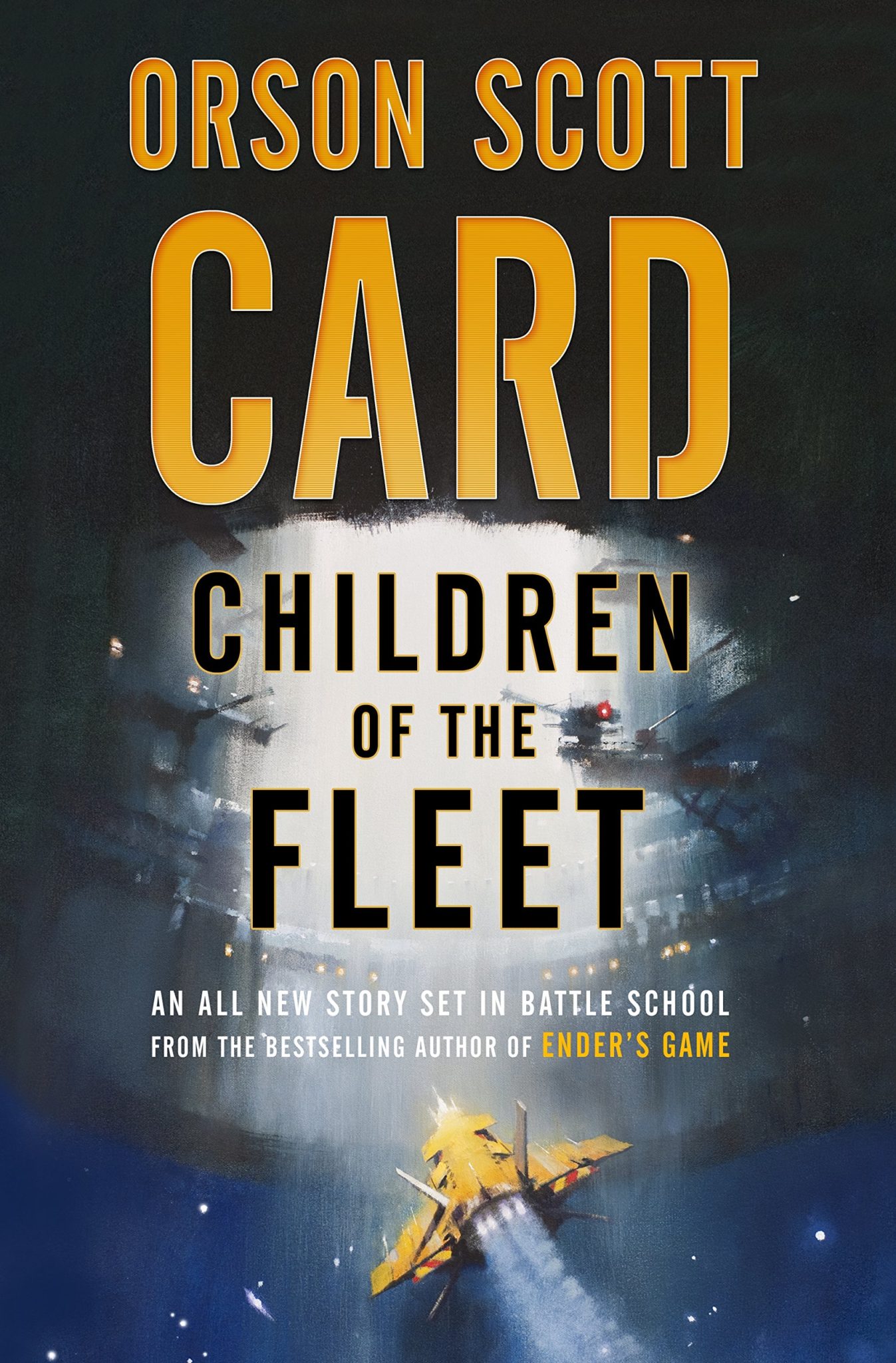 Title: Children of the Fleet
Title: Children of the Fleet
Author: Orson Scott Card
Series: Children of the Fleet #1 (Enderverse)
Release Date: October 10, 2017
Publisher: Tor Books
Review Spoilers: Low
GoodReads | Amazon
In Children of the Fleet, Battle School undergoes something of a renovation. No longer is the school meant for child saviors who might lead a fleet against the Formics. For all intents and purposes that war is over after Ender and his jeesh saved the world. Instead, the school now focuses on training the future ship captains and mission commanders on exploratory and colonization missions across the galaxy. Admission requirements have relaxed a bit. While test scores still matter the most important requirement for admission is that the children admitted be the sons and daughters of fleet personnel, lunar residents, off-world miners — or really anyone without strong ties to any Earth government.
The book follows eleven year old Dabeet Ochoa, a precocious (and arrogantly so) child determined to break free of his overprotective mother and make a name for himself among the stars. He’s an interesting main character because Dabeet isn’t an easy person to like at first. As far as he’s concerned he’s the smartest person in the room no matter where he is and you know it. Reading the story from his perspective lets you see his flaws outright as well, as he begins to recognize and address them.
Much like Ender, Dabeet learns to work with the other students but it takes time and he is hardly the natural leader that he wishes he could be. That’s actually a good thing, though. It lets the other students shine. Since Dabeet is from Earth he struggles through a lot of the book to adapt to not just the lack of gravity in the Battle Room but to many aspects of life in space. So we see other characters coming in to help him and at times put him in his place — something even the reader will agree Dabeet needs at times.
Children of the Fleet does a lot to reinvent the world of Ender’s Game while still solidly marking its place within the larger narrative. Battle School is a very different place. Certain areas are shutdown entirely while others have been adapted for the school’s new purpose. While the Battle Room still hosts battles between armies, they’re far less important. Though, if you thought the battles would be a boring rehashing of the same style fighting from Ender’s Game and Ender’s Shadow you’re in for some surprises!
Parts of Dabeet’s story also overlap or are at the very least influenced by events we’ve seen in other books. Bean’s story continued after Ender’s Shadow, highlighting the challenges on Earth after the Formics were defeated, and certain events are referenced in Children of the Fleet. Characters from the other books are also referenced with others, like Graff, making actual appearances throughout. Some of the tie-ins feel unnecessary or gratuitous but for the most part they simply help Children of the Fleet and Dabeet find their place in the greater Ender chronology.
It took me a little while to get into Children of the Fleet, I admit, because I think I had this misconception that it really would be more like Ender’s Game and Ender’s Shadow. It’s important to understand that Children of the Fleet really is its own book with it’s own characters and general focus.
Dabeet’s story is ultimately less focused saving the world as it is overcoming the political turmoil on Earth and looking towards a future elsewhere. And while the first book finds itself embroiled in some Earth-based issues, there’s a lot of potential for the rest of the series if it shifts gears and truly focuses on exploration and colonization.
In the end, Children of the Fleet doesn’t quite capture the imagination the same way that Ender’s Game and Ender’s Shadow did but it’s still a decent story in its own right. And as Dabeet’s story continues, the series has the potential to really set itself apart in the wider Ender universe. If you’re a fan of the other Ender books then you’ll enjoy Children of the Fleet and you’ll definitely appreciate all the ways it ties into previous books.
